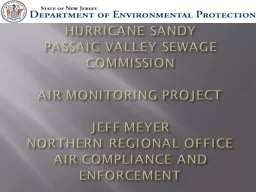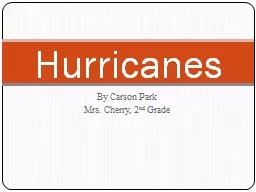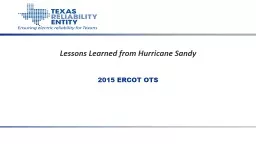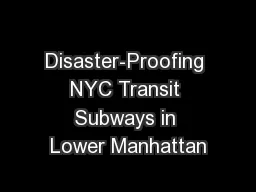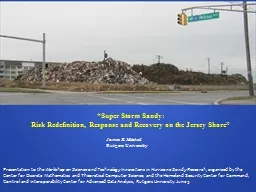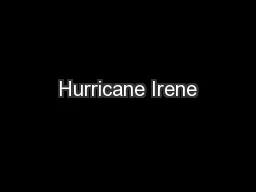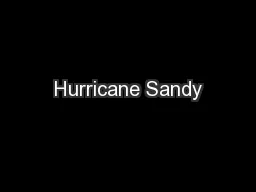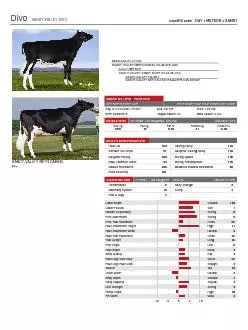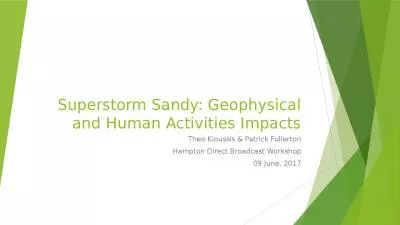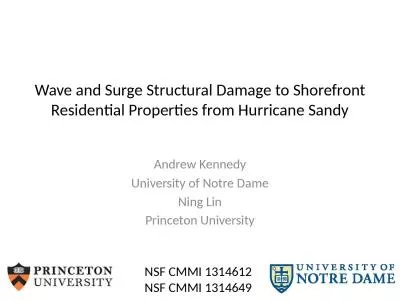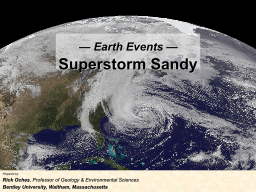PPT-HURRICANE SANDY
Author : alida-meadow | Published Date : 2016-02-29
PASSAIC VALLEY SEWAGE COMMISSION AIR MONITORING PROJECT JEFF MEYER NORTHERN REGIONAL OFFICE AIR COMPLIANCE AND ENFORCEMENT HURRICANE SANDY HURRICANE SANDY IMPACT
Presentation Embed Code
Download Presentation
Download Presentation The PPT/PDF document "HURRICANE SANDY" is the property of its rightful owner. Permission is granted to download and print the materials on this website for personal, non-commercial use only, and to display it on your personal computer provided you do not modify the materials and that you retain all copyright notices contained in the materials. By downloading content from our website, you accept the terms of this agreement.
HURRICANE SANDY: Transcript
Download Rules Of Document
"HURRICANE SANDY"The content belongs to its owner. You may download and print it for personal use, without modification, and keep all copyright notices. By downloading, you agree to these terms.
Related Documents

